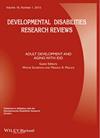Bruce H. Cohen
{"title":"Pharmacologic effects on mitochondrial function","authors":"Bruce H. Cohen","doi":"10.1002/ddrr.106","DOIUrl":null,"url":null,"abstract":"<p>The vast majority of energy necessary for cellular function is produced in mitochondria. Free-radical production and apoptosis are other critical mitochondrial functions. The complex structure, electrochemical properties of the inner mitochondrial membrane (IMM), and genetic control from both mitochondrial DNA (mtDNA) and nuclear DNA (nDNA) are some of the unique features that explain why the mitochondria are vulnerable to environmental injury. Because of similarity to bacterial translational machinery, mtDNA translation is likewise vulnerable to inhibition by some antibiotics. The mechanism of mtDNA replication, which is required for normal mitochondrial maintenance and duplication, is inhibited by a relatively new class of drugs used to treat AIDS. The electrochemical gradient maintained by the IMM is vulnerable to many drugs that are weak organic acids at physiological pH, resulting in excessive free-radical generation and uncoupling of oxidative phosphorylation. Many of these drugs can cause clinical injury in otherwise healthy people, but there are also examples where particular gene mutations may predispose to increased drug toxicity. The spectrum of drug-induced mitochondrial dysfunction extends across many drug classes. It is hoped that preclinical pharmacogenetic and functional studies of mitochondrial toxicity, along with personalized genomic medicine, will improve both our understanding of mitochondrial drug toxicity and patient safety. © 2010 Wiley-Liss, Inc. Dev Disabil Res Rev 2010;16:189–199.</p>","PeriodicalId":55176,"journal":{"name":"Developmental Disabilities Research Reviews","volume":"16 2","pages":"189-199"},"PeriodicalIF":0.0000,"publicationDate":"2010-08-27","publicationTypes":"Journal Article","fieldsOfStudy":null,"isOpenAccess":false,"openAccessPdf":"https://sci-hub-pdf.com/10.1002/ddrr.106","citationCount":"53","resultStr":null,"platform":"Semanticscholar","paperid":null,"PeriodicalName":"Developmental Disabilities Research Reviews","FirstCategoryId":"1085","ListUrlMain":"https://onlinelibrary.wiley.com/doi/10.1002/ddrr.106","RegionNum":0,"RegionCategory":null,"ArticlePicture":[],"TitleCN":null,"AbstractTextCN":null,"PMCID":null,"EPubDate":"","PubModel":"","JCR":"","JCRName":"","Score":null,"Total":0}
引用次数: 53
Abstract
The vast majority of energy necessary for cellular function is produced in mitochondria. Free-radical production and apoptosis are other critical mitochondrial functions. The complex structure, electrochemical properties of the inner mitochondrial membrane (IMM), and genetic control from both mitochondrial DNA (mtDNA) and nuclear DNA (nDNA) are some of the unique features that explain why the mitochondria are vulnerable to environmental injury. Because of similarity to bacterial translational machinery, mtDNA translation is likewise vulnerable to inhibition by some antibiotics. The mechanism of mtDNA replication, which is required for normal mitochondrial maintenance and duplication, is inhibited by a relatively new class of drugs used to treat AIDS. The electrochemical gradient maintained by the IMM is vulnerable to many drugs that are weak organic acids at physiological pH, resulting in excessive free-radical generation and uncoupling of oxidative phosphorylation. Many of these drugs can cause clinical injury in otherwise healthy people, but there are also examples where particular gene mutations may predispose to increased drug toxicity. The spectrum of drug-induced mitochondrial dysfunction extends across many drug classes. It is hoped that preclinical pharmacogenetic and functional studies of mitochondrial toxicity, along with personalized genomic medicine, will improve both our understanding of mitochondrial drug toxicity and patient safety. © 2010 Wiley-Liss, Inc. Dev Disabil Res Rev 2010;16:189–199.
对线粒体功能的药理作用。
细胞功能所需的绝大多数能量是在线粒体中产生的。自由基的产生和细胞凋亡是线粒体的其他重要功能。线粒体内膜(IMM)的复杂结构、电化学特性以及线粒体DNA (mtDNA)和核DNA (nDNA)的遗传控制是解释线粒体易受环境损伤的一些独特特征。由于与细菌翻译机制的相似性,mtDNA翻译同样容易受到某些抗生素的抑制。线粒体dna的复制机制是正常线粒体维持和复制所必需的,它被一种相对较新的用于治疗艾滋病的药物所抑制。IMM维持的电化学梯度容易受到生理pH下许多弱有机酸类药物的影响,导致自由基的过量生成和氧化磷酸化的解偶联。这些药物中的许多可能会对健康的人造成临床伤害,但也有一些例子表明,特定的基因突变可能会增加药物毒性。药物引起的线粒体功能障碍的频谱延伸到许多药物类别。希望线粒体毒性的临床前药理学和功能研究,以及个性化基因组医学,将提高我们对线粒体药物毒性和患者安全性的理解。©2010 Wiley-Liss, Inc开发与残疾,2010;16:19 9 - 199。
本文章由计算机程序翻译,如有差异,请以英文原文为准。

 求助内容:
求助内容: 应助结果提醒方式:
应助结果提醒方式:


